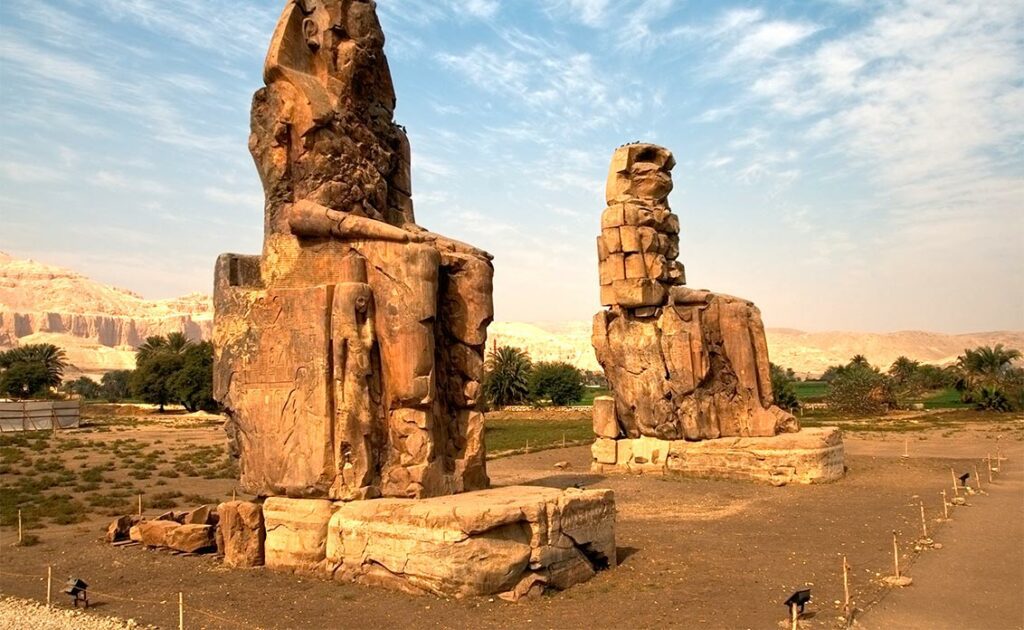It is said that a mother’s love lasts forever. We can assume this is true with the story of Memnon and Eos, where their love transcended time, and distance, depicted in Egypt.
After an earthquake fractured the Colossi of Memnon, the damaged statue began “singing” at sunrise. Scientists credit early morning heat evaporating dew trapped within the statue’s crack, creating vibrations that resonated across the desert air.
Colossi of Memnon
Pharaoh Amenhotep III reigned during the period of the New Kingdom, circa 1570 to 1069 BC. In keeping up with the traditions of great pharaohs, Amenhotep III began enormous construction projects throughout Egypt. His vision was of land magnificence that it would take one’s breath away. He commissioned testified to his achievement in accomplishing this with over 250 buildings, temples, statuaries, and stele. Part of this accomplishment was the Colossi of Memnon.
The Colossi of Memnon are two massive structures that are 60-feet high and weigh approximately 720 tons each. These structures were initially carved from single blocks of quartzite sandstone. The twin colossi are located in Al Bairat, Al Qarna, Luxor Governorate, Egypt, and are about 50 feet away. (Source: World History)
The twin colossi depicted Pharaoh Amenhotep III. They previously flanked his lost mortuary temple entrance, which was once Egypt’s most sumptuous structure. Their faded side panels show Happy, the god of the neighboring Nile. Over the last few decades, the twin colossi and its immediate surroundings have been excavated. The project is still ongoing. (Source: Atlas Obscura)
The Colossi’s Voice
Even though decades of floods reduced the temple to looted ruins, these statues have withstood all-natural disasters. The northern Colossus was destroyed by an earthquake in 27 BC, which collapsed its top and shattered its bottom half. Surprisingly, the damaged statue not only survived the accident but also discovered its voice afterward. (Source: Atlas Obscura)
The twin colossi got its name from the legend of Memnon, from Greek Mythology. Memnon was a post-Homeric hero who went to help his uncle Priam, the last ruler of Troy, against the Greeks after the death of the Trojan warrior Hector. He displayed great bravery but was killed by the Greek hero Achilles. According to legend, Zeus, the gods’ monarch, was moved by Eos’ (Memnon’s mother, likened to the dawn of day) tears and granted immortality upon Memnon. (Source: Britannica)
Each morning, when the rising sun’s rays struck the statue, it produced melodious noises akin to the twang of a harp string. This was supposed to be Memnon’s response to his mother Eos’ greeting. Scientists speculated that the singing actually came from the vibration in one of the cracks in the tower. Each morning, the early morning sun and desert air cause dew within the crack to evaporate, causing the vibration.
Unfortunately, the voice can no longer be heard today, thanks to the supposed repair of Roman emperor Septimius Severus commissioned during the first or second century. (Source: How Stuff Works)
